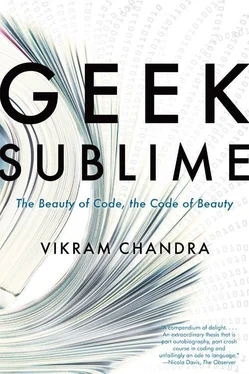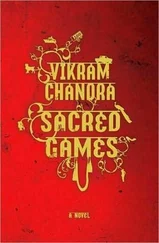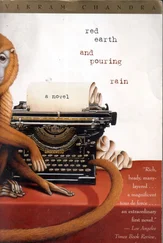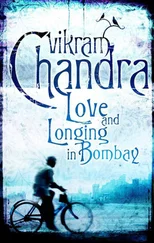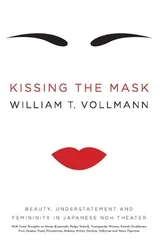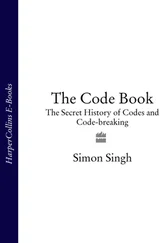11. Ingalls Sr., Masson, and Patwardhan, The Dhvanyaloka of Anandavardhana with the Locana of Abhinavagupta , 118.
12. Gnoli and Abhinavagupta, The Aesthetic Experience According to Abhinavagupta , XXXVI.
13. Ibid., 48.
14. Pandit, “Dhvani and the ‘Full World.’” 143.
15. Ibid.
16. Ibid., 148.
17. Ingalls Sr., Masson, and Patwardhan, The Dhvanyaloka of Anandavardhana with the Locana of Abhinavagupta , 70.
18. Masson and Patwardhan, Aesthetic Rapture , 10.
19. Ingalls Sr., Masson, and Patwardhan, The Dhvanyaloka of Anandavardhana with the Locana of Abhinavagupta , 192.
20. Ibid., 43.
21. Gnoli and Abhinavagupta, The Aesthetic Experience According to Abhinavagupta , 106.
22. McCrea, The Teleology of Poetics in Medieval Kashmir , 395.
23. Ibid., 395–96.
24. Ibid., 216–17.
25. Ingalls Sr., Masson, and Patwardhan, The Dhvanyaloka of Anandavardhana with the Locana of. Abhinavagupta , 671.
26. Ibid., 680–81.
27. Ibid., 681–82.
28. Gnoli and Abhinavagupta, The Aesthetic Experience According to Abhinavagupta , 59.
29. Ibid., 102.
30. Ingalls Sr., Masson, and Patwardhan, The Dhvanyaloka of Anandavardhana with the Locana of Abhinavagupta , 226.
31. Ibid., 592.
32. Ibid., 71.
33. Ibid., 193.
34. Ibid., 500, 505.
35. Ibid., 503–04.
36. Translated from Anandavardhana’s Dhvanyaloka (3.20 e) by Luther Obrock.
37. Douglas, Thinking in Circles , loc. 403.
38. Ibid., loc. 43.
39. Ibid., loc. 57.
40. Witzel, “On the Origin of the Literary Device of the Frame Story in Old Indian Literature,” 411.
41. Shulman, “The Buzz of God and the Click of Delight,” 56.
42. Ibid., 58.
43. See Kapoor, Dimensions of Pāṇini Grammar: The Indian Grammatical System , 193.
44. Ingalls Sr., Masson, and Patwardhan, The Dhvanyaloka of Anandavardhana with the Locana of Abhinavagupta , 437.
Chapter 8: Mythologies and Histories
1. Gupta, Hoens, and Goudriaan, Hindu Tantrism , 6.
2. White, “Introduction: Tantra in Practice: Mapping a Tradition,” 7.
3. Urban, The Power of Tantra , loc. 322–25.
4. Ibid., loc. 1091.
5. Ibid., loc. 1274.
6. Ibid., loc. 182–85.
7. Wezler, “Do You Speak Sanskrit? On a Class of Sanskrit Texts Composed in the Late Middle Ages,” 331.
8. Freely adapted from Feuerstein, Tantra , loc. 3682.
9. Urban, The Power of Tantra , 1219.
10. Davidson, Indian Esoteric Buddhism , 179.
11. See Sanderson, “Śaivism and the Tantric Traditions.”
12. Pomeda, The Heart of Recognition: A Translation and Study of Kṣemarāja’s Pratyabhijñāhṛdayam , 46.
13. Dehejia, The Advaita of Art , 129.
14. Ibid.
15. Ratié, “Remarks on Compassion and Altruism in the Pratyabhijñā Philosophy,” 350.
16. Ibid.
17. Muller-Ortega, The Triadic Heart of Śiva , 61–62.
18. Ratié, “Remarks on Compassion and Altruism in the Pratyabhijñā Philosophy,” 361–62.
19. Sanderson, “Śaivism and the Tantric Traditions,” 696.
20. Ratié, “Otherness in the Pratyabhijñā Philosophy,” 363–64.
21. Wallis, “The Descent of Power: Possession, Mysticism, and Initiation in the Śaiva Theology of Abhinavagupta,” 253–54.
22. Urban, The Economics of Ecstasy , loc. 1008.
23. Translated from the Bhaver Gita with the help of Dilip Misra, Rakesh Mishra, and Monidipa Mondal.
24. Urban, The Economics of Ecstasy , loc. 1351.
25. Ibid., 863.
26. Ibid., 579.
27. Sanderson, “Purity and Power among the Brahmans of Kashmir,” 193.
28. Tharu and Lalita, Women Writing in India , 68.
29. Parashar and Rājaśekhara, Kāvyamīmāiṇsā of Rājaśekhara , 157.
30. Tharu and Lalita, Women Writing in India , xviii.
31. Ibid., xx.
32. Ibid., 6.
33. Ibid., 116.
34. Urban, The Power of Tantra , loc.254; Urban, The Economics of Ecstasy , loc.556.
35. Tharu and Lalita, Women Writing in India , 8.
36. Ibid., 2.
37. Ibid., 145
38. Ibid., 3.
39. Ibid.
40. Ibid., 5–6.
41. Ibid., 6.
42. Wujastyk, “Indian Manuscripts,” 1–2.
43. Ibid.
44. Dominik Wujastyk, e-mail to author, December 19, 2012.
45. Wujastyk, “Indian Manuscripts,” 2.
46. Dominik Wujastyk, e-mail to author, December 13, 2012.
47. Wujastyk, “Indian Manuscripts,” 3.
48. Copyright © 1998 by Andrew Schelling. Reprinted with the permission of City Lights Books. Schelling, The Cane Groves of Narmada River , 48.
49. Ibid., 149.
50. Ibid.
51. Rotter, “Gender Relations, Foreign Relations: The United States and South Asia, 1947–1964,” 523.
52. Ibid., 527.
53. Conrad, Heart of Darkness and Selections from the Congo Diary , loc. 1881, 2028, 1886.
54. Ibid., loc. 1011, 1454.
55. Gleick, The Information , 418.
56. Ibid., 436.
57. Ibid., 217.
Chapter 9: The Language of Literature
1. Translated from Anandavardhana’s Dhvanyaloka (3.41 a) by Luther Obrock.
2. Bronner and Shulman, “’A Cloud Turned Goose’: Sanskrit in the Vernacular Millennium,” 28–29.
3. Pollock, “The Death of Sanskrit,” 394.
4. Dalmia, “Sanskrit Scholars and Pandits of the Old School,” 334.
5. See Srinivas, “Amarabhāratī: Sanskrit and the Resurgence of Indian Civilization,” 41–42.
6. Kapoor and Ratnam, Literary Theory: Indian Conceptual Framework , 1.
7. Ramaswamy, “Sanskrit for the Nation,” 334–35.
8. Ibid., 373.
9. Pollock, “The Cosmopolitan Vernacular,” 29.
10. Merwin, East Window: The Asian Translations , 36.
11. Eliot, The Sacred Wood and Major Early Essays , 58.
12. Eliot, After Strange Gods , 43–44.
13. Sanderson, “Śaivism and the Tantric Traditions,” 675.
14. Christiansen, “Computers.”
15. Pipher, Writing to Change the World , 81.
16. Tedd, “Hours of Hell and Anguish,” 95.
17. Ibid., 97.
18. West, Conversations with William Styron , 9.
19. Review, The Paris Review Interviews , III, 22.
20. Ingersoll and Ingersoll, Conversations with Anthony Burgess , 73.
21. Fisher, The Writer’s Quotebook , 18.
22. Acocella, “Blocked: Why Do Writers Stop Writing?” 129.
23. Leeds, The Enduring Vision of Norman Mailer , 132.
24. Cowley, And I Worked at the Writer’s Trade , 191.
25. Tedd, “Hours of Hell and Anguish,” 99.
26. Ingalls Sr., Masson, and Patwardhan, The Dhvanyaloka of Anandavardhana with the Locana of Abhinavagupta , 120.
27. Matilal, “Vakroti and Dhvani: Controversies about the Theory of Poetry in the Indian Tradition,” 381.
28. Parashar and Rājaśekhara, Kāvyamīmāṃsā of Rājaśekhara , 149.
29. Gnoli and Abhinavagupta, The Aesthetic Experience According to Abhinavagupta , XLIX.
30. Muller-Ortega, The Triadic Heart of Śiva , 46.
Chapter 10: Application.Restart()
1. Muller-Ortega, “Seal of Sambhu,” 574.
2. “Fwd: Amar Chitra Katha Comics in Samskritam: Participate in Readership Survey — Google Groups.”
3. Singh, “New Life, Old Death for Sanskrit in Uttarakhand.”
Читать дальше
